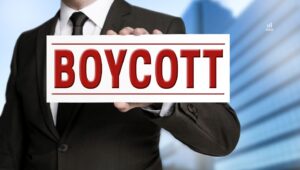
As U.S. tariffs stack up, some Amazon sellers are eyeing Europe’s booming ecommerce market for relief.
Facing escalating tariffs in 2025, particularly on goods from major trading partners, Amazon sellers are experiencing significant financial strain and operational hurdles. This environment necessitates strategic adaptation to mitigate the impact of rising import duties and unpredictable trade policies.
The consequences of these tariffs are far-reaching, squeezing profit margins and potentially disrupting supply chains as sellers navigate increased costs and policy uncertainty. According to the International Trade Administration, Europe stands as the third biggest retail ecommerce market globally, generating US$631.9 billion in revenue; projections indicate a 9.31% annual growth, reaching US$902.3 billion by 2027.
Exploring Europe’s burgeoning online marketplace presents a potential avenue for diversification and a buffer against U.S. tariff pressures, offering access to a substantial customer base and independent growth opportunities. Is this expansion, however, the definitive answer to the mounting challenges posed by stacking tariffs?
Is European ecommerce expansion the answer to tariff woes?
More Amazon sellers are exploring opportunities in Europe as a strategic response to rising U.S. tariffs, according to Musawar Ali’s LinkedIn post. The shift reflects a growing trend among e-commerce entrepreneurs seeking more stable ground for their operations.
A recent CNBC article also spotlighted this movement, featuring Amazon sellers who are questioning whether a pivot to European markets could offer a more predictable and profitable path forward.
To expand into Europe presents several key advantages for Amazon sellers navigating increasing U.S. tariffs. This strategic move offers access to a substantial and expanding customer base across Europe and diverse nations.
Larger new market reach
Sellers can tap into a significant customer pool beyond the U.S., diversifying revenue streams. This reduces reliance on the U.S. market and cushions against domestic economic shifts or policy changes like tariffs.
Reduced competition
Certain European markets or product categories may exhibit less saturation than the highly competitive U.S. landscape, according to this Avask article. This offers sellers a greater opportunity to establish their brand and optimize market share.
Leveraging Amazon's presence
Sellers can capitalize on Amazon’s established brand recognition and customer trust in Europe, according to this Forceget content. This can lead to quicker ecommerce sales growth compared to building a brand from the ground up.
Efficient fulfillment
Utilizing Amazon’s European FBA network ensures streamlined order fulfillment and faster delivery for European customers. This enhances customer satisfaction and loyalty.
Diverse sales opportunities
Europe’s distinct shopping seasons and holidays provide additional sales avenues. Check out this Amazon Europe sales calendar from Forest Shipping. This can help balance out slower sales periods in the U.S. market.
Strong regulatory environment
The EU’s robust regulatory framework, including GDPR, promotes a secure online shopping environment, as tackled in this article from Lezzat. This can benefit both sellers and consumers, fostering trust.
Can sellers successfully expand to European ecommerce market to counter tariffs?
While European ecommerce penetration and expansion offers a promising avenue to counter U.S. tariffs, navigating its complexities requires careful consideration. Adapting to the diverse linguistic and cultural landscape across European nations is a primary challenge.
Localization is key
A Margin Business article explains that effective localization of product listings (title, bullet points, and product descriptions), marketing materials, and customer service is crucial for connecting with European consumers. Understanding cultural nuances goes beyond simple translation.
VAT management
Managing Value Added Tax (VAT) across multiple EU member states presents a significant hurdle, as this ePost Global article discussed. Compliance with each country’s distinct VAT rules, especially for Pan-European FBA sellers, can be intricate and may necessitate expert tax consultation.
Regulatory compliance
Sellers must ensure their products adhere to stringent EU product safety regulations, labeling standards, and other legal requirements. Failure to comply can result in penalties or market access issues.
Logistics and shipping
Developing efficient shipment logistics for cross-border shipping within the EU is crucial, considering potential customs duties and varying delivery expectations. Utilizing Amazon’s fulfillment network or experienced logistics partners can aid in this process.
Global Trade"As eCommerce continues its global expansion, businesses eyeing the European Union market face a complex yet promising frontier."
Market research
Thorough market research is essential to understand product demand, competition, and optimal pricing strategies (including VAT) for each target European country.
Strategic expansion is paramount for success in Europe
European e-commerce expansion and actions to address tariff woes should be undertaken strategically, not impulsively. This allows for careful consideration of evolving policies and related updates.
Successfully navigating these complexities involves meticulous planning, utilizing Amazon’s resources, and potentially seeking expert guidance for localization and VAT.
An Amazon agency can provide valuable insights and support for a strategic entry into the European marketplace. By tailoring strategies to the specific nuances of each European market, sellers can potentially transform the challenge of U.S. tariffs into an opportunity for international ecommerce growth, demanding significant preparation and continuous management.
How your ecommerce business can strategically ride out the storm
As U.S.-China trade tensions rise and new tariffs loom, Amazon sellers are starting to feel the pressure. Industry expert and founder of our Amazon agency, Steven Pope, shared his take on the growing unease and offered practical advice for staying resilient.
Pope advises against impulsive reactions, emphasizing that there’s typically no “first mover advantage” in logistics. Instead, he urges Amazon brands to “HODL” – a term borrowed from cryptocurrency, meaning to hold on and not look at short-term fluctuations. This strategy suggests maintaining course and avoiding hasty overhauls of supply chains or business models based on the current volatile tariff landscape.
- A crucial principle for Amazon sellers remains avoiding stockouts. Pope has long advocated for maintaining a substantial inventory, ideally a year’s supply, to weather potential disruptions.
- Limiting the number of SKUs can provide resilience during supply chain stress, allowing sellers to focus on core, high-performing products.
- While considering alternative manufacturing locations like the U.S. or Vietnam might seem appealing, Pope cautions against being a “first mover.” Domestic manufacturing can face cost challenges, and sourcing from other countries like Vietnam presents its own set of logistical and developmental complexities. Furthermore, the current tariff situation could change rapidly, potentially rendering immediate supply chain shifts unnecessary.
Pope predicts a challenging two to three years due to the ongoing trade tensions. He advises sellers to buckle up and weather the storm, rather than giving up. He points out that the tariff issue impacts various sectors, not just Amazon sellers, suggesting that pivoting to a different industry might not offer an escape.
Strategic actions to minimize risk
- Limit order sizes
For immediate needs, consider placing smaller, more frequent orders to limit exposure to current tariffs.
- Negotiate with suppliers
Explore the possibility of negotiating with Chinese manufacturers to have them act as the importer of record and bear the tariff and shipping costs, though success rates may vary.
Ultimately, Pope’s message is one of cautious resilience.
Amazon sellers are encouraged to hold their ground, manage their inventory wisely, and avoid impulsive decisions based on the fluid tariff situation. Strategic adjustments, rather than radical overhauls, are recommended to navigate the current economic headwinds.






